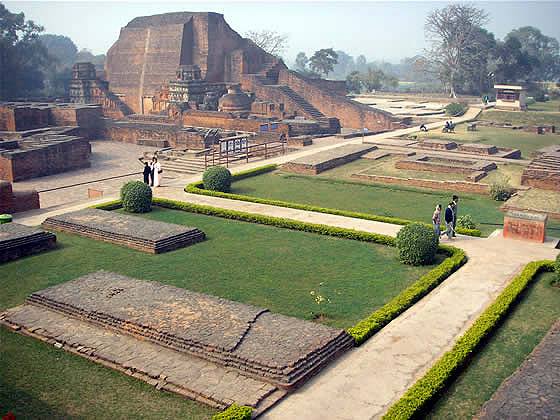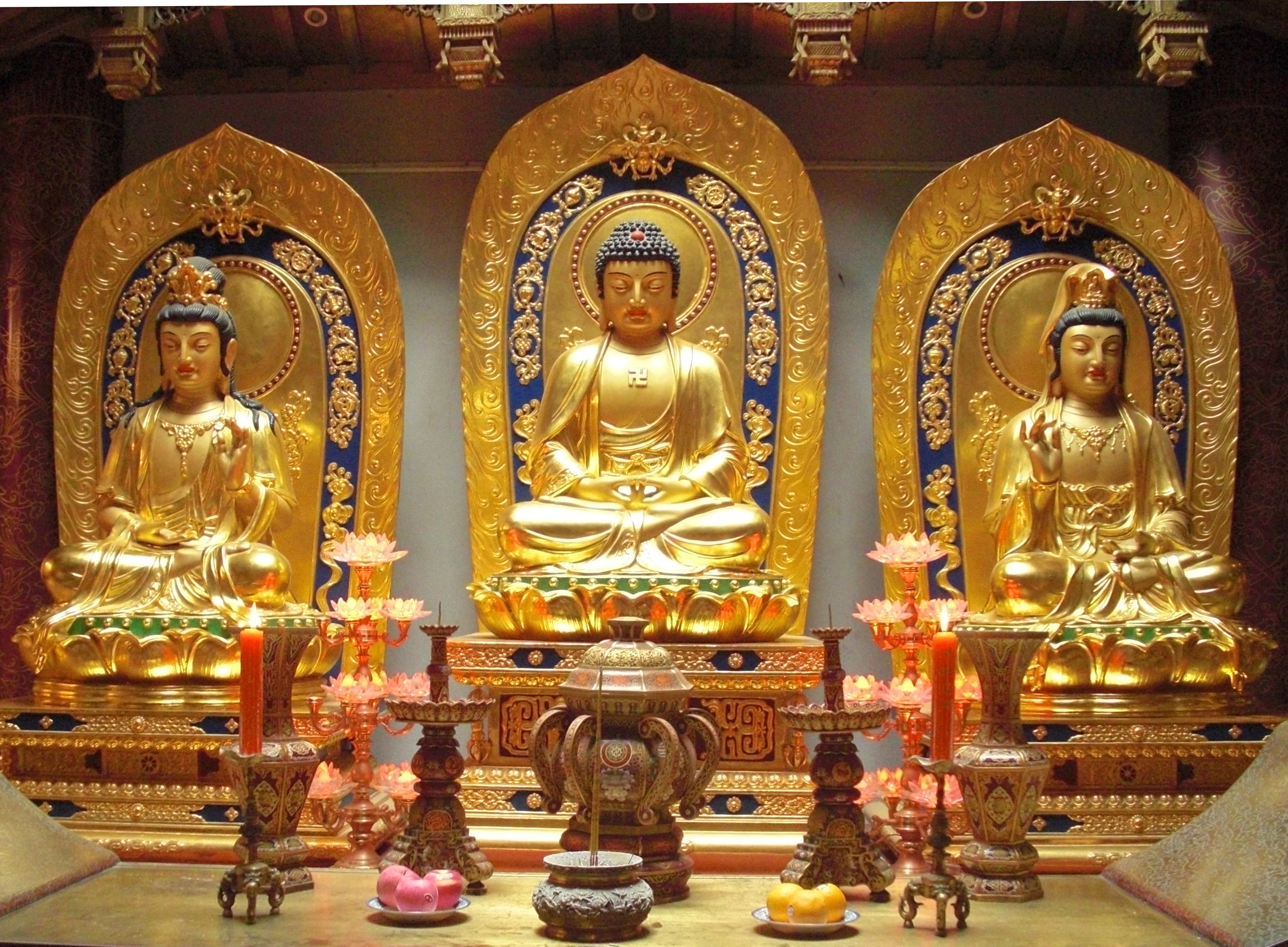|
Zhiyi
Zhiyi (; 538–597 CE) also called Dashi Tiantai (ه¤©هڈ°ه¤§ه¸«) and Zhizhe (و™؛者, "Wise One"), was a Chinese Bhikkhu, Buddhist monk, Buddhist philosophy, philosopher, meditation teacher, and Exegesis, exegete. He is considered to be the founder of the Tiantai Buddhist tradition, as well as its fourth Patriarch (Buddhism), patriarch. إڑramaل¹‡a Zhiyi is widely regarded as one of the most influential figures in the development of East Asian Buddhism, East Asian Buddhist thought and practice. As the first major Chinese Buddhist thinker to construct a comprehensive religious system based primarily on Chinese interpretations, Zhiyi played a crucial role in synthesizing various strands of Mahayana Buddhism into a unique coherent framework."Tiantai Zhiyi." In ''The Princeton Dictionary of Buddhism'', 911–12. Princeton University Press, 2014. http://www.jstor.org/stable/j.ctt46n41q.27. According to David W. Chappell, Zhiyi "has been ranked with Thomas Aquinas and al-Ghazali as one o ... [...More Info...] [...Related Items...] OR: [Wikipedia] [Google] [Baidu] |
Tiantai
Tiantai or T'ien-t'ai () is an East Asian Buddhist school of Mahؤپyؤپna Buddhism that developed in 6th-century China. Drawing from earlier Mahؤپyؤپna sources such as Madhyamaka, founded by Nؤپgؤپrjuna, who is traditionally regarded as the first patriarch of the school, Tiantai Buddhism emphasizes the "One Vehicle" () doctrine derived from the influential '' Lotus Sإ«tra'', as well as the philosophy of its fourth patriarch, Zhiyi (538–597 CE), the principal founder of the tradition. Brook Ziporyn, professor of ancient and medieval Chinese religion and philosophy, states that Tiantai Buddhism is "the earliest attempt at a thoroughgoing Sinitic reworking of the Indian Buddhist tradition." According to Paul Swanson, scholar of Buddhist studies, Tiantai Buddhism grew to become "one of the most influential Buddhist traditions in China and Japan." Tiantai is sometimes also called "The Dharma Flower School" (), after its focus on the '' Lotus Sإ«tra'', whose Chinese title tra ... [...More Info...] [...Related Items...] OR: [Wikipedia] [Google] [Baidu] |
Tendai
, also known as the Tendai Dharma Flower School (ه¤©هڈ°و³•èڈ¯ه®—, ''Tendai hokke shإ«,'' sometimes just ''Hokkeshإ«''), is a Mahؤپyؤپna Buddhist tradition with significant esoteric elements that was officially established in Japan in 806 by the Japanese monk Saichإچ. The Tendai school, which has been based on Mount Hiei since its inception, rose to prominence during the Heian period (794–1185). It gradually eclipsed the powerful Hossإچ school and competed with the rival Shingon school to become the most influential sect at the Imperial court. By the Kamakura period (1185–1333), Tendai had become one of the dominant forms of Japanese Buddhism, with numerous temples and vast landholdings. During the Kamakura period, various monks left Tendai to found new Buddhist schools such as Jإچdo-shإ«, Jإچdo Shinshإ«, Nichiren-shإ« and Sإچtإچ Zen. The destruction of the head temple of Enryaku-ji by Oda Nobunaga in 1571, as well as the geographic shift of the capital away from ... [...More Info...] [...Related Items...] OR: [Wikipedia] [Google] [Baidu] |
Lotus Sutra
The ''Lotus Sإ«tra'' (Sanskrit: ''Saddharma Puل¹‡ل¸چarؤ«ka Sإ«tram'', ''Sإ«tra on the White Lotus of the True Dharma'', zh, p=Fاژhuأ، jؤ«ng, l=Dharma Flower Sutra) is one of the most influential and venerated Buddhist Mahؤپyؤپna sإ«tras. It is the main scripture on which the Tiantai along with its derivative schools, the Japanese Tendai and Nichiren, Korean Cheontae, and Vietnamese Thiأھn Thai schools of Buddhism were established. It is also influential for other East Asian Buddhist schools, such as Zen. According to the British Buddhologist Paul Williams, "For many Buddhists in East Asia since early times, the ''Lotus Sإ«tra'' contains the final teaching of Shakyamuni Buddha—complete and sufficient for salvation." The American Buddhologist Donald S. Lopez Jr. writes that the ''Lotus Sإ«tra'' "is arguably the most famous of all Buddhist texts," presenting "a radical re-vision of both the Buddhist path and of the person of the Buddha." Two central teachings ... [...More Info...] [...Related Items...] OR: [Wikipedia] [Google] [Baidu] |
Mohe Zhiguan
The Mohe Zhiguan (T. 1911), or the ''Larger Treatise on Cessation and Contemplation'' () is a major Buddhist doctrinal treatise based on lectures given by the Chinese Tiantai patriarch Zhiyi (538–597 CE) in 594. These lectures were compiled and edited by Zhiyiآ´s disciple Guanding (561-632) into seven chapters in ten fascicles.Fa QinThe إڑamatha and Vipaإ›yanؤپ in Tian Tai Poh Ming Tse Symposium 2013: One Master Three Meditative Traditions. Singapore, August 30, 2013; pp.30-47 The voluminous ''Mohe Zhiguan'' is a comprehensive Buddhist doctrinal summa that discusses meditation and various key Buddhist doctrines which were very influential in the development of Buddhist meditation and Buddhist philosophy in China. It is one of the central texts of Tiantai (and Japanese Tendai). Overview The ''Mohe Zhiguan'' is one of three major works attributed to Zhiyi, the founder of the Tiantai school. While his other two great works focus primarily on doctrine, the ''Mohe Zhiguan'' presents ... [...More Info...] [...Related Items...] OR: [Wikipedia] [Google] [Baidu] |
Buddhist Meditation
Buddhist meditation is the practice of meditation in Buddhism. The closest words for meditation in the classical languages of Buddhism are ''bhavana, bhؤپvanؤپ'' ("mental development") and ''Dhyؤپna in Buddhism, jhؤپna/dhyؤپna'' (a state of meditative absorption resulting in a calm and luminous mind). Buddhists pursue meditation as part of the path toward Moksha, liberation from defilements (''Kleshas (Buddhism), kleshas'') and clinging and craving (''upؤپdؤپna''), also called Bodhi, awakening, which results in the attainment of nirvana. The Indian Schools of Buddhism, Buddhist schools relied on numerous meditation techniques to attain meditative absorption, some of which remain influential in certain modern schools of Buddhism. Classic Buddhist meditations include ''anapanasati'' (mindfulness of breathing), ''Patikulamanasikara, asubha bhavana'' ("reflections on repulsiveness");Deleanu, Florin (1992)Mindfulness of Breathing in the Dhyؤپna Sإ«tras Transactions of the Internatio ... [...More Info...] [...Related Items...] OR: [Wikipedia] [Google] [Baidu] |
Buddhist Philosophy
Buddhist philosophy is the ancient Indian Indian philosophy, philosophical system that developed within the religio-philosophical tradition of Buddhism. It comprises all the Philosophy, philosophical investigations and Buddhist logico-epistemology, systems of rational inquiry that developed among various schools of Buddhism in ancient India following the ''Parinirvana, parinirvؤپل¹‡a'' of Gautama Buddha (c. 5th century BCE), as well as the further developments which followed the Silk Road transmission of Buddhism, spread of Buddhism throughout Asia. Buddhism combines both philosophical reasoning and the Buddhist meditation, practice of meditation.Siderits, Mark. Buddhism as philosophy, 2007, p. 6 The Buddhist religion presents a multitude of Buddhist paths to liberation; with the expansion of early Buddhism from ancient India to Sri Lanka and subsequently to East Asia and Southeast Asia, Buddhist thinkers have covered topics as varied as cosmology, ethics, epistemology, logic ... [...More Info...] [...Related Items...] OR: [Wikipedia] [Google] [Baidu] |
Guoqing Temple
The Guoqing Temple (, "Monastery of National Purity") is a Buddhist temple on Mount Tiantai, in Taizhou, Zhejiang Province, China. Originally built in 598 CE during the Sui dynasty, and renovated during the reign of the Qing Yongzheng Emperor (r. 1722–1735), the temple is located roughly from the city of Hangzhou. It was the initial site for the creation of the Tiantai school of Mahؤپyؤپna Buddhism, founded by the Chinese Buddhist teacher Zhiyi (538–597 CE). The temple covers an area of some and features 600 rooms in a total of 14 different halls, including the Mahavira Hall of Sakyamuni, the Hall of Five Hundred Arhats and the Hall of Monk Jigong. The exterior of the building features Chinese pagodas such as the Sui Pagoda, the Seven Buddha Pagoda, and the Memorial Pagoda of Monk Yi Xing (683–727 CE). History In 598 CE, according to Master Zhiyi's last wish, the ruler of Sui dynasty (581–618 CE) built Guoqing Temple on Mount Tiantai. The Tiantai school was one of t ... [...More Info...] [...Related Items...] OR: [Wikipedia] [Google] [Baidu] |
Pure Land Buddhism
Pure Land Buddhism or the Pure Land School ( zh, c=و·¨هœںه®—, p=Jأ¬ngtا”zإچng) is a broad branch of Mahayana, Mahayana Buddhism focused on achieving rebirth in a Pure land, Pure Land. It is one of the most widely practiced traditions of East Asian Buddhism, Buddhism in East Asia. It is also known as the "Lotus School" (Chinese language, Chinese: è“®ه®—; pinyin: ''Liأ،nzإچng'') in China or the "Nianfo, Nembutsu school" in Japan. East Asian Pure Land mainly relies on three main Mahayana sutras, Mahayana scriptures: the ''Longer Sukhؤپvatؤ«vyإ«ha Sإ«tra, Sutra of Amitayus'', the ''Amitؤپyus Contemplation Sإ«tra, Contemplation Sutra'' and the ''Shorter Sukhؤپvatؤ«vyإ«ha Sإ«tra, Amitabha Sutra''. The Pure Land tradition is primarily focused on achieving rebirth in a Buddhahood, Buddha's "pure land", a superior place to spiritually train for full Buddhahood, where one can meet a Buddha face to face and study under them without any of the distractions or fears of our world.Williams, Pau ... [...More Info...] [...Related Items...] OR: [Wikipedia] [Google] [Baidu] |
Nanyue Huisi
Nanyue Huisi (, 515-577), was an eminent Chinese Buddhist monk, traditionally regarded as the third patriarch of the Tiantai school. According to Sasaki, Huisi "was the leading authority on the ''Lotus Sutra'' of his time." Biography The earliest sources on Huisi's life are the "Vow Established by the Great Dhyana Master Huisi from Southern Peak", a work attributed to Huisi, Daoxuanآ´s hagiography in the "Continued Biographies of Eminent Monks" (ç؛Œé«کهƒ§ه‚³ Xأ¹ gؤپosؤ“ng zhuأ n) and in his "Catalogue of uddhistWorks in the Imperial Collection of the Great Tang". Born with the surname Li () in Wujin و¦و´¥ (Shangcai ن¸ٹè”،, Henan و²³هچ—) in 515 CE, Huisi left home to join the monastic order at fourteen. By the age of nineteen, he undertook the full monastic precepts, thus becoming a fully ordained monk. Then he began visiting meditation masters in northern Henan. He joined the community of Huiwen, who, according to Tiantai tradition, taught meditation techniques of the G ... [...More Info...] [...Related Items...] OR: [Wikipedia] [Google] [Baidu] |
Ruyi (scepter)
A ''ruyi'' () is a Chinese curved decorative object that serves as either a ceremonial scepter in Chinese Buddhism or a talisman symbolizing power and good fortune in Chinese folklore. The "ruyi" image frequently appears as a motif in Asian art. A traditional ''ruyi'' has a long S-shaped handle and a head fashioned like a fist, cloud, or lingzhi mushroom. ''Ruyi'' are constructed from diverse materials. For example, the Palace Museum in Beijing has nearly 3,000 ''ruyi'' variously made of gold, silver, iron, bamboo, wood, ivory, coral, rhinoceros horn, lacquer, crystal, jade, and precious gems. Word The Chinese term ''ruyi'' is a compound of ''ru'' ه¦‚ "as; like; such as; as if; for example; supposing; be like; be similar; accord with" and ''yi'' و„ڈ "wish; will; desire; intention; suggestion; thought; idea; meaning; imagination". Standard Chinese uses ''ruyi'' either as a stative verb meaning "as desired; as one wishes, as one likes; according to one's wishes; following ... [...More Info...] [...Related Items...] OR: [Wikipedia] [Google] [Baidu] |
Cheontae
Uicheon, the founder of the Korean Tiantai school Cheontae is the Korean descendant of the Chinese Buddhist school Tiantai. Tiantai was introduced to Korea a couple of times during earlier periods, but was not firmly established until the time of Uicheon (1055-1101) who established Cheontae in Goryeo as an independent school. Due to Uicheon's influence, it came to be a major force in the world of Goryeo Buddhism. After he returned from Song China in 1086, Uicheon sought to ease conflict between the doctrinal Gyo () schools and Seon () schools, believing that the Cheontae doctrine would be effective to this end. Cheontae doctrine holds the Lotus Sutra as the peak of the Buddha's teachings, and postulates the following: * All things are empty and without essential reality. * All things have a provisional reality. * All things are both absolutely unreal and provisionally real at once. In accordance with the Cheontae doctrine, all experiences in the sensory world are in ... [...More Info...] [...Related Items...] OR: [Wikipedia] [Google] [Baidu] |
إڑإ«nyatؤپ
''إڑإ«nyatؤپ'' ( ; ; ), translated most often as "emptiness", "Emptiness, vacuity", and sometimes "voidness", or "nothingness" is an Indian philosophical concept. In Buddhism, Jainism, Hinduism, and Indian philosophy, other Indian philosophical traditions, the concept has multiple meanings depending on its doctrinal context. It is either an Ontology, ontological feature of reality, a meditative state, or a Phenomenology (philosophy), phenomenological analysis of experience. In Theravada, Theravؤپda Buddhism, ' often refers to the Anatta, non-self (Pؤپli: ', Sanskrit: ') nature of the Skandha, five aggregates of experience and the ؤ€yatana, six sense spheres. ' is also often used to refer to a Buddhist meditation, meditative state or experience. In Mahayana, Mahؤپyؤپna Buddhism, ' refers to the tenet that "all things are empty of intrinsic existence and nature (''svabhava'')", but may also refer to the Buddha-nature teachings and primordial or empty awareness, as in Dzogchen ... [...More Info...] [...Related Items...] OR: [Wikipedia] [Google] [Baidu] |







